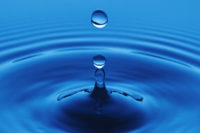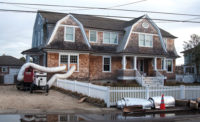Changing Times in the Water Damage Industry

Traditionally, water damage restoration has been viewed as a service focused on tried and true drying practices. Today, more and more hard science is involved, offering new technology that is changing the drying industry.
Drying technology has evolved enormously over the past decade and continues to change the way we dry and monitor wet buildings. The countless improvements and innovations that make the disaster restoration industry what it is today were all made possible by equipment manufacturers improving on dehumidification, moisture meters improving drying practices, HEPA filtration, and positive or negative air pressure.
Restorers are demanding and finding better quicker ways to dry wet material. Disaster restoration crosses many disciplines and is important to homeowners, insurance providers, building engineers, risk managers and many others who are asking that we bring new scientific knowledge to the table. The adoption of new technologies is radically changing the industry and its workforce.
Growing use of research and the quest to find better, faster, more economical drying has intensified competition. For example, the development of heat-based drying promises to open up remarkable possibilities. Business practices are evolving too, with some companies adding new drying equipment to their toolbox while others are stuck drying with older, less-efficient-but-still-useful equipment.
To further complicate matters, consumers are becoming more involved, and state regulations are entering the picture. The result for the industry is a growing need for skilled technicians who bring with them the ability to learn new and changing technologies.
While many of our education providers offer solid industry-specific training, we need to teach new technology to both technicians and to individuals who are otherwise “set” in the way they employ drying technology. We need to explore a wider range of scientific studies that provide a solid foundation for our industry. This requires a move toward more scientific inquiry that will happen not only in laboratories, but also in practical field applications and from already existing scientific peer-reviewed studies.
There is a strong bridge between what we believe to be true and science that supports it. What we are really seeing is a merging of science with our practices. This new science, combined with smart technology, is producing more scientific data. Remote sensing, thermal imaging, infrared lasers, new and improved moisture meters, better data collection, and more efficient data storage and retrieval are helping to move our industry forward.
The need for technicians with new and diverse skills is also compounded by the fact that many of those working in the industry are comfortable with old or outdated technology and skills. The combined impact of outdated skills and technology makes retention and replacement an issue unless older skilled technicians are ready to undergo additional training and education.
In a study conducted by Dr. Randy Rapp and Jing Pan from Purdue University, over 95% of respondents have earned one or more restoration-related certificates, with 78% having certifications issued by the IICRC and another 58% from RIA. Only 9% claimed no certifications at all.
The reason for change is clear. Research is improving our industry. As manufacturers build better, faster drying equipment and meter manufacturers develop faster processors to collect drying data, we will dry wet buildings more efficiently. Further, small impacts that seemed negligible before are now so pronounced that they are threatening to make older equipment obsolete. The upshot is that we’re fast approaching the point when drying is more of a science then an art.
In anticipation of that day, researchers, myself included, are already working on promising new data collection methods, building a foundation on science that we hope to exploit for drying buildings quicker while limiting secondary damage.
Looking for a reprint of this article?
From high-res PDFs to custom plaques, order your copy today!






